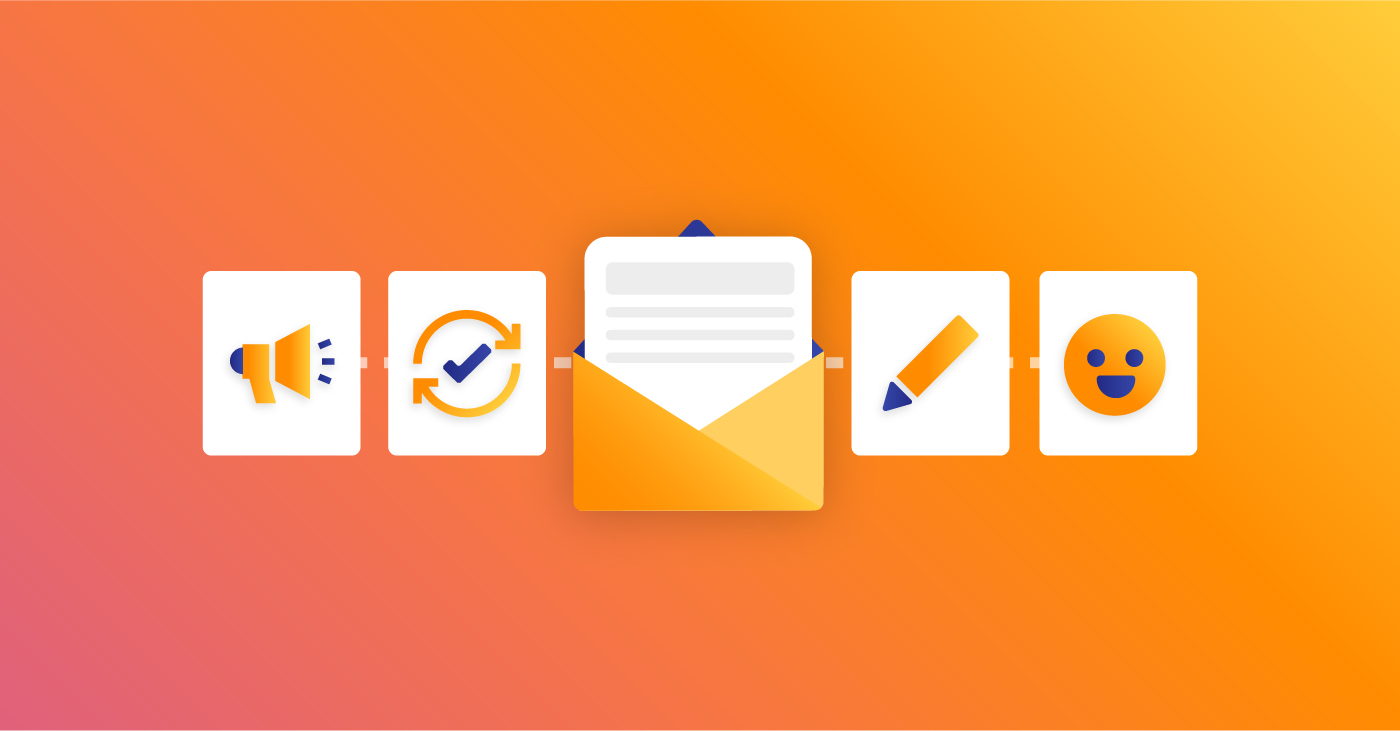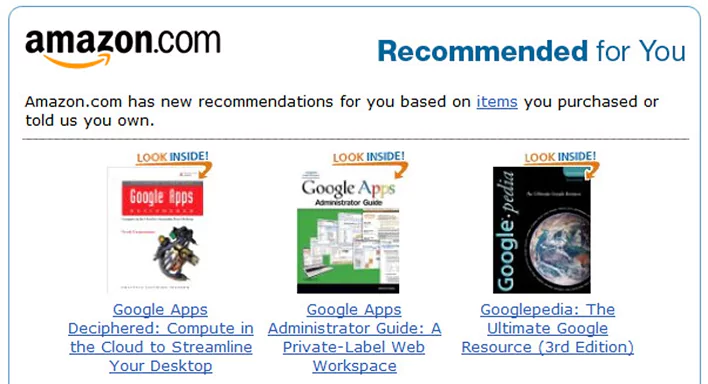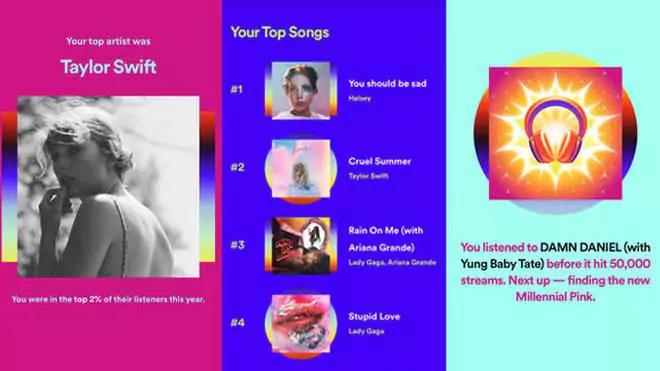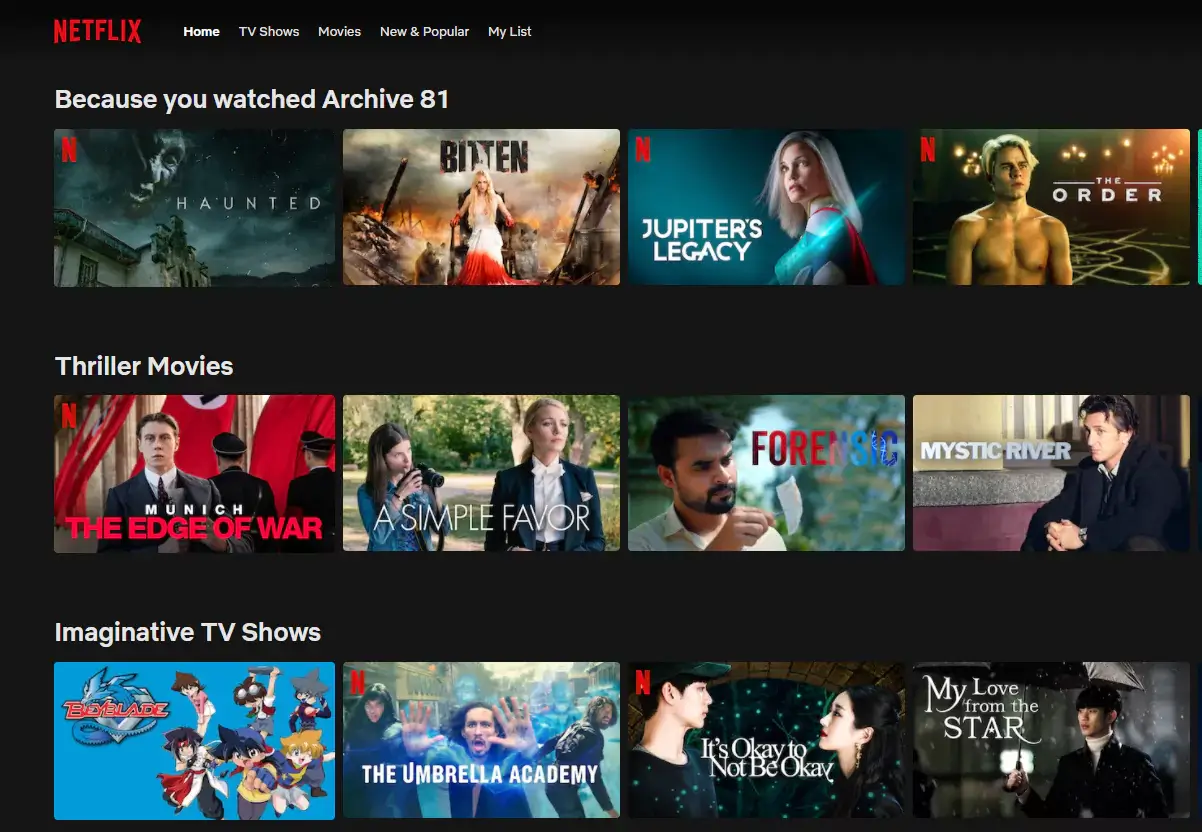10 Email Segmentation Strategies to Hone Your Marketing Message & Make More Sales
April 12, 2022 9 min read

Social media services like Facebook, Instagram, and Snapchat are now a fundamental part of daily online life. But, you might be surprised to learn that email marketing has maintained high importance in digital communication while also growing in popularity.
According to statistics, the total number of global email users equates to 4 billion in 2020 and is evaluated only to increase to around 4.6 billion users by 2025. The number of emails communicated daily is expected to increase to over 376.4 billion in 2025.
We already know that email personalization is a crucial element in successful digital marketing. But what about email segmentation?
Email segmentation groups contacts with similar characteristics based on things like their location, gender, or how recently they have clicked on an email. This helps you refine your email strategy and provide your audience segments with content curated specifically to their interests.
However, determining the best segmentation approach might be time-consuming. But don’t worry, we’ve got you covered with this list of ten effective strategies to segment your email list:
1. Get Your Demographic Data Ready
The first way that many marketers begin to segment their email list is through demographics. Segmenting your customers in this way can dramatically increase your click-through rate.
Nonspecific characteristics such as age and gender and other information like income level, region, and education level can say a lot about a person’s interests and needs.
Surveys show that 84% of brands are using basic segmentation in their email marketing efforts.
You can get all this basic information about your audience right from the email signup process, and the more you get, the more insights you’ll have for easy demographic segmentation.
2. Use Survey and Quiz Results
You can also get access to nuanced data about your customers by creating a survey or quiz. They provide valuable demographic information as well as an opportunity to gain insight into individual tastes, preferences, and beliefs.
The results can help you to segment your audience into different groups of buyers so you can offer them the right product or promotion. Quiz marketing is an effective way to gain more information on customers and leads.
Quiz tools can help you a lot in this regard. Krister Ungerböck, who is a keynote speaker, global communication expert, and former CEO of a global technology company, had a lot of success using Survey Anyplace. “The typical quiz response rate is 30% on quizzes, and ours is between 65% and 75%, using Survey Anyplace,” she said.
Pro-tip: Instead of presenting it as a survey, you can also turn it into a quiz that provides a compelling outcome for your audience. The result is more email campaign engagement, increased sales, and increased customer lifecycle value.
3. Leverage Geographic Location Data
There are many ways to use geo-location data, which makes geo-segmentation a valuable tool, especially for businesses where location greatly influences purchasing decisions.
We’ve all seen weather-based clothing recommendations on eCommerce sites. This is a great example of setting up weather-based product recommendations so that users who live in a specific location are advised to make purchases based on real-time weather.
For example, if you have a construction-related store and you want to inform subscribers about local events and promotions, it can be useful to create segments based on location.
Other ways companies can use geographic data are:
- Location-based content: Use titles or content locations to get attention and provide a personalized experience.
- Time-based email messages: Distribute emails so that they can be sent to customers in different time zones at the optimal time.
- Local advertising: Send targeted emails about events at a particular store. You can include a customized itinerary to make the email more personalized.
All thanks to the magic of adding a custom field for the location to your sign-in form! This will allow you to take location-based marketing to a whole new level.
4. Look at the Customer’s Past Purchases
Segmentation based on past purchases is another easy way to optimize your targeting. The most convenient way is to send us a recommendation email for similar items or accessories that are suitable for your audience’s previous purchases.
Alternatively, if a customer purchases something that needs a replacement, refill or upgrade, you can send a targeted email based on the particular member’s potential needs.
When running a small business effectively, the main goal is to increase sales and strengthen customer relationships. This requires a Customer Relationship Management (CRM) tool, which is an all-in-one management software that allows you to store, organize, and manage your lead and customer information in one place.
5. Consider the Position in the Sales Funnel
Segmenting by where your prospects are in your sales funnel is one of the most useful ways to customize your message.
By visualizing your sales in this sales funnel template, you can easily test, improve, and forecast your revenue. Managing sales leads in templates help you to implement strategies and tools to better validate them.
Based on where your customers are in the sales funnel, you can tailor your messaging strategy to engage and convert them. You will mainly have three divisions to manage in your sales funnel:
- Top of the Funnel: ToFu contains new subscriptions and customer inquiries. You can email them, educating them about your eCommerce brand and storefront values to nurture the relationship.
- Middle of the Funnel: You can break down the MoFu segment with product-specific emails, instant deals, and personalized user recommendations.
- Bottom of the Funnel: BoFu is almost always ready to convert or leave the sale. However, users may experience cart abandonment at this stage. To prevent this, you can send these customers a “push” email to restore their cart and complete their purchase at checkout.
6. Check Their Personal Interests
Another email segmentation strategy worth implementing is based on personal interests. You can create a user profile on your website or use an email subscription center to get more information about your subscribers’ personal interests. By asking your followers directly, you can easily eliminate the noise by targeting your audience based on their real interests.
Remember getting an email from Spotify listing the best songs of the year and your favorite genres? Spotify uses this personal interest information intelligently to automatically introduce similar music or notify you of new releases.
Netflix also does the same with recommended movies and series based on the content we have already watched. This is a good example of segmentation based on individual interests.
To create segments based on individual interests, you need to track the behavior of your contacts and assign them tags to represent the products or services they interact with most often.
Personal interest segmentation can:
- Help increase sales for specific product categories.
- Discover more of your target audience’s potential necessities.
- Provide much more personalized content for a better experience.
7. Look Into Website Interactions
Tracking website behavior is another easy way to get additional information about your visitors’ interests. The sheer amount of behavioral data you can gather right now is impressive. There are tools to track visitor scrolling behavior, icons clicked, time spent on pages, menus visited, and more.
Although this targeted marketing requires more resources, it can also significantly increase conversion rates and revenue. For example, you can send targeted emails based on specific pages visited, but that’s not the only option.
Here are two common behaviors that you may utilize as a starting point for simple segmentation based on website interactions:
- Browse Abandonment: For people who are exploring your company website but do not place an order or a purchase for any product.
- Cart Abandonment: For when someone has items in their cart but does not finish the ordering process to check them out.
You can fix this by segmenting users accordingly and sending them appropriate prompts to encourage them towards the desired result.
8. Check Their Purchase Quantities and Values
Here is a cool thing you could do with segmentation based on purchase quantity and value. You can identify your users and recognize them in terms of their loyalty using segments based on how often they buy and how much they spend.
If you sell both high and low-priced items, using spending as a segmentation approach can be very effective in reaching your customer base. A customer’s purchase history can be used to find out who is more likely to buy higher-priced items and who is more interested in lower-priced items.
Here is an example with a few ways to create segments based on the purchase history:
- VIPs: Users with high disposable income.
- Discount-Shoppers: People motivated by discount offers.
- Loyalists: Price-conscious customers who show brand loyalty.
By this, non-monetary offers can be sent exclusively to VIP customers, and a 10-30% discount offer can be sent to the other two segments.
9. Have a Look at Opt-In Frequencies
Having a subscription form on your website is one of the easiest ways to get people to opt-in for your newsletter. Create a dedicated landing page for this form where people can enter their details and opt-in to receive promotional emails from you.
When using lead magnets, which are essentially incentives that ensure your potential customers receive free content, items, or services when they sign up and provide their personal information, you should note how they sign up for your offer.
Some of them can register on your website or your social networks, while others can register on both platforms. Your goal is to keep an eye on the latter, as this segment will be your target audience for new lead magnets, whether you use your website or social feed to let them know about your current offers.
That’s why you should let every new subscriber know how many emails you’ll be sending. Better yet, let them choose exactly the emails/frequency they want. This will not only allow you to personalize the experience but will also give you valuable insight into your audience.
10. Consider Subscription Renewals and Cancellations
It’s vital to build your membership and bring in consistent money when you’re running a business. You worked hard to gather followers and persuade them to join you.
Organizations, particularly those with subscription-based and monthly recurring revenue business models, have never had it more important to maintain long-term client relationships and retain the current followers. If all of your efforts are centered on attracting new members, you’re overlooking an equally important source of revenue: your present members.
Some members may find that the membership isn’t a good fit for them, and that’s perfectly fine! Always include a cancellation policy in your subscription agreement. This provides them a choice, and people are more likely to be drawn to something that gives them a choice rather than an offer that cannot be canceled.
Renewal emails can be automated and sent to existing customers, reminding them that their membership or subscription is about to expire and prompting them to take action. These types of emails are commonly used for subscription services as well as products with recurring payments.
Are You Ready to Start Effectively Segmenting Your Emails?
We hope that you’ve grasped the fundamentals of email segmentation and the ten strategies you can use today to convert more customers. It’s time to jump from generic mass emails into a more individualized and personalized engagement with your readers.
It’s all about reaching the right inboxes at the right time with the appropriate subject. It is also quite personal and effective.
The more you explore and experiment in segmentation, the more you’ll discover that providing customized content to a specific customer database boosts email engagement and income. You might even come up with a new segmentation method that works better.
So, what are you waiting for? Get started with segmenting today!
Mark Quadros is a SaaS content marketer that helps brands create and distribute rad content. On a similar note, Mark loves content and contributes to several authoritative blogs like HubSpot, CoSchedule, Foundr, etc. Connect with him via LinkedIn or Twitter.










